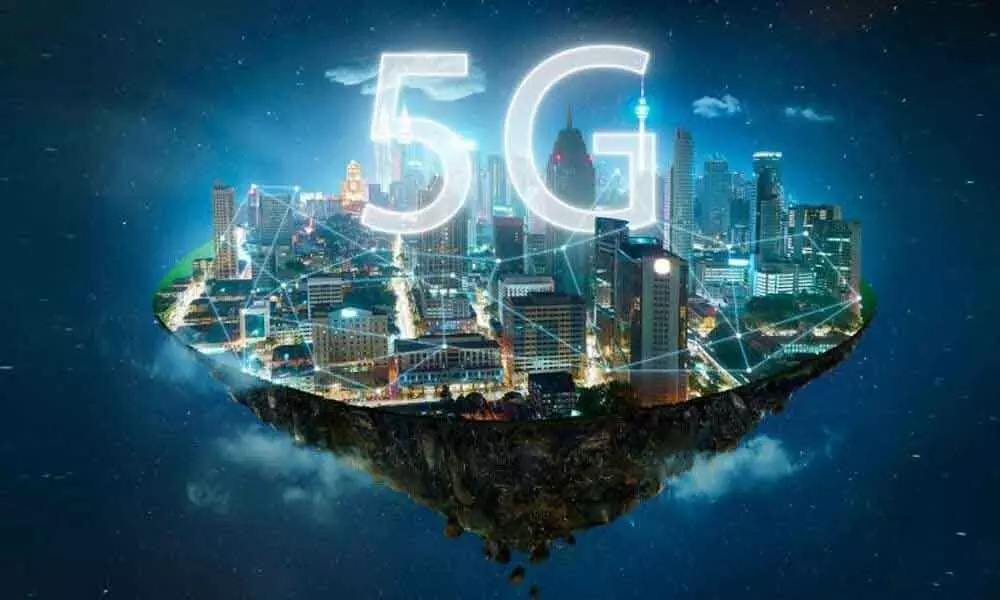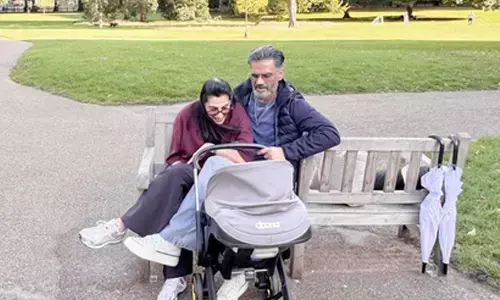Future of 5G depends on backhaul tech

5G Network
Backhaul connects the RAN (Radio Access Network) to the core network. It is also called a transport network. Without good backhaul, the advantages of 5G can’t be fully exploited.
Backhaul connects the RAN (Radio Access Network) to the core network. It is also called a transport network. Without good backhaul, the advantages of 5G can't be fully exploited. To enjoy an ultra modern car (5G), the road (backhaul) should also be good! The high capacity, faster speed and low latency of 5G can be realised only if backhaul is having adequate capacity.
In our country optical fibre and digital microwave systems are mainly used for backhaul for cellular systems. However the various options for 5G backhaul are as follows:
A. Optical Fibre (OF) systems: This is the ideal choice for 5G backhaul. It provides the best digital experience with high capacity and low BER (Bit Error Rate). To increase the bandwidth over the fibre network, DWDM (Dense Wavelength Division Multiplexing) technology is used. In this technology multiple signals at different wavelengths are combined and transmitted on the same fibre. Unlike several developed countries, we are lacking in fibre infrastructure. Currently only 33 per cent of telecom towers are connected with fibre. We have to achieve 70 per cent of fiberization of towers to utilise the full potential of 5G. The current capacity per tower site is about 300 Mbps for 2/3/4G, while the capacity required per site for 5G will increase from 1 to 5 Gbps to provide good customer experience necessitating the use of fibre as backhaul. Deployment of fibre is expensive and difficult. All sites may not be accessible on fibre. Recently DOT has liberalised ROW (Right of Way) policies including allowing laying of overhead OF cables which will encourage fibre deployment by the TSPs (Telecom Service Providers). It has decided to expedite the approvals for ROW.
B. FSO (Free space Optics): Free space optical communication is an optical communication technology that uses light propagating in free space (air) to transmit data. Currently FSO is capable of transmitting upto 2.5 Gbps of data. It operates between 780 and 1600 nm wavelengths. Coverage range is 8 Km. No spectrum issues. FSO systems can be deployed easily. It costs one fifth of fibre network costs. Requires low maintenance. Disadvantage is that it suffers from fog. Requires LOS (Line of Sight) condition. It gets interference from background light sources including the sun. As beam width is narrow, it has stringent deployment requirements.
C. Wireless backhaul systems
The features required for wireless backhaul systems for rural, suburban and urban areas are as follows:
The various wireless backhaul systems are as follows:
1. Traditional digital microwave systems: Frequency bands 13/15/18/23 GHz are used for Cellular backhaul Digital Microwave systems. These are Licence bands. Compared to fibre this is a cheaper option and can be deployed quickly. Lower microwave frequencies support long hop lengths, for rural Base Stations. These systems require LOS (Line of Sight) or near LOS. Capacity of existing bands will not be sufficient for backhauling the 5G networks.
2. Sub-6 band microwave systems: 0.9 GHz, 1.8 GHz, 2.4 GHz, 5 GHz bands are used. Application is point to point links. Advantages are this is unlicensed spectrum, requires low capex and LOS is not required. Disadvantages are low capacity and high interference.
3. E band and V band systems: They have a high throughput capacity of 10 Gbps to 25 Gbps.
u E- band (71-76 GHz, 81-86 GHz)): It offers fibre like performance with cost efficiency. It addresses speed, latency and capacity requirement of 5G backhaul by offering more spectrum and wider channel bandwidth particularly for Urban areas. E band is a light licensed band in India whereas it is unlicensed in other countries. LOS is required for this band. Range is 10 km. Data throughput is 20 Gbps. The Capex requirement is quite low. Disadvantage is that this band has more Rain Attenuation. Antenna size is 0.6 m.
u V band (57-64 GHz): In this band absorption by Oxygen is high. Range is only 300-700 m.This is a licence free band and can be used for applications other than telecom. So there is a large production of V band equipment leading to lower prices.
4. mm wave fixed wireless systems: The frequency band used is 28-40 GHz. It is for point to point application. Disadvantage of this band is that it overlaps with Satellite communication frequencies.
5. Integrated Access and Backhaul (IAB): 5G supports mm wave (26GHz to 28GHz) whose spectrum availability is in abundance. Hence higher bandwidth can be used in this band. Although the 5G mm wave band supports high speed and large capacity, attenuation will be more because of higher frequency. So coverage will be less and so it is useful for small cells (10 m-50 m range). These small cells may be required to provide coverage in the basement, stadium etc. These small cells require high capacity backhaul. As fibre may not reach all places and because of capacity limitation of microwave systems, IAB solution can be used. This is a new kind of backhaul. In this solution, Backhaul uses the same 5G radio resources of access (connectivity to User Equipment, UE). This is also called 5G self backhaul. Advantages are faster deployment and use for multihop or star topology. Number of hops is limited by network performance (capacity and latency). It can be easily upgraded to fibre later (as and when fibre resources are available) as IAB provides generic IP connectivity. IAB solution can be used in SA (Stand Alone, where separate Cores will be there for 4G and 5G) as well as NSA (Non Stand Alone, Core is common) implementations. IAB requires a disintegrated RAN model like that employed in the Open RAN architecture in which the Distribution Unit (DU) is separate from the Central Unit (CU). TDD (Time Division Duplexing ) technique is used for scheduling the timing of Backhaul and Access traffic.
The use cases of IAB are Indoor application, suburban application, provision of urban street coverage, coverage extension, filling the coverage gap/hole, for temporary 5G deployment etc.
D. Using satellite medium as backhaul
Where laying of fibre or deploying wireless link is not technically feasible, like some places in the NorthEast region, satellite medium is the only option. In July 2021 DCC (Digital Communications Commission) approved the use of satellite connectivity as backhaul for cellular systems. This allows TSPs to use satellite capacity from VSAT (Very Small Aperture Terminal) licence holders like BSNL to connect their BTSs. However the challenges of using GSO (Geostationary Orbit) based satellite connectivity are high latency (about 240 milliseconds), low capacity and cost. These issues will be addressed if LEO (Low Earth Orbit) based satellite connectivity is used instead.
Way forward
1. TSPs should focus on increasing the capacity of backhaul before 5G is deployed. Fiberization of towers should be given priority and DOT should monitor this activity. Sharing of fibre resources among the TSPs should be encouraged and monitored by DOT field units.
2. The spare fibre resources of BBNL, especially in rural areas, should be gainfully utilised by the TSPs for fiberization of the towers.
3. There is an urgent need for standardising the laying of cable on highways. Even laying of overhead OF cables on streets/ highways should be standardised. It should be allowed only in exceptional cases, it should be only as a stop gap arrangement and should be replaced with regular underground cable.
4. TSPs require access to E band and V band spectrum, provision of adequate spectrum bands with wider channel sizes in these bands.
(The author is a former Advisor, Department of Telecommunications (DoT), Government of India)
















